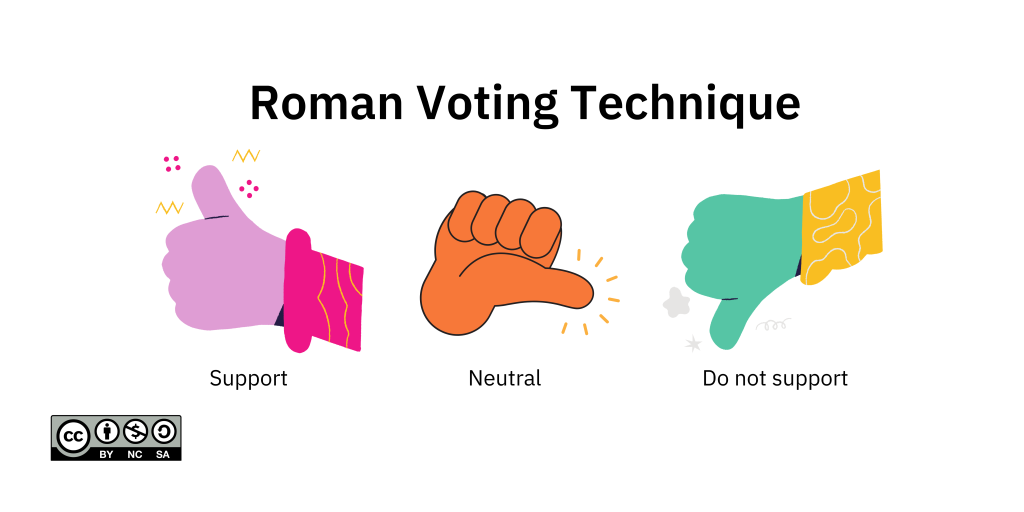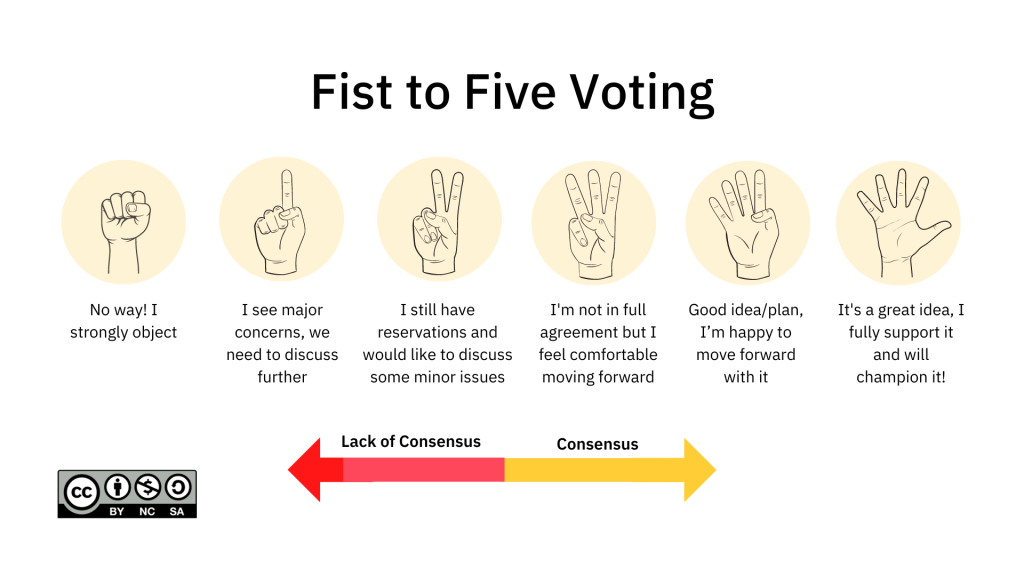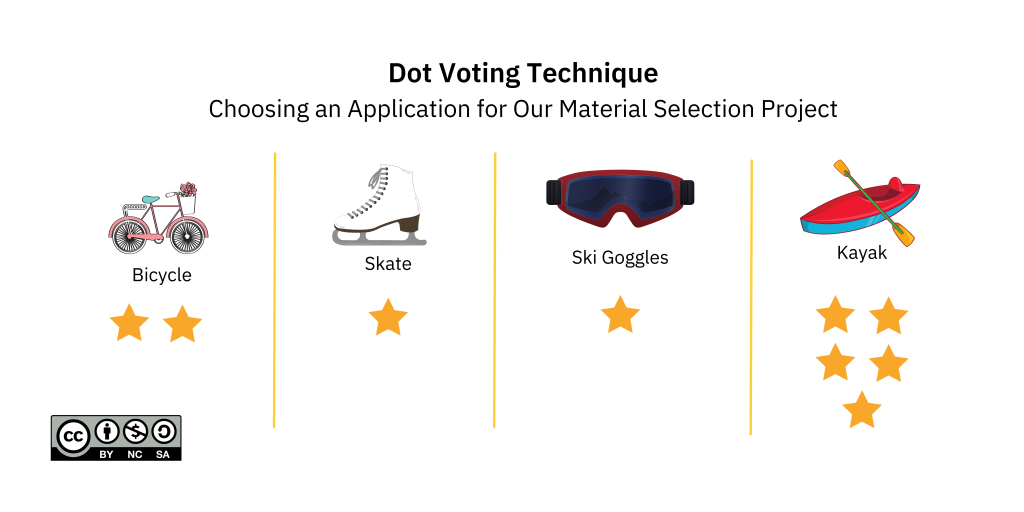7. Making Decisions as a Team
For successful team decision-making, you must first ensure all team members are well-informed, meaning everyone has a clear understanding of the action or idea being proposed and why. It is also important that everyone has a voice when arriving at a decision. Once your team has a good understanding of the issue at hand, you may want to consider a voting strategy to help confirm that your team has reached a consensus on a proposed plan or idea within a reasonable time. A few voting methods are described below but keep in mind that the following list is meant to be illustrative and not exhaustive.
Voting methods:
- Polling
- Fist to Five Voting
- Dot Voting
Polling
A team may also vocalize or signal their preference in a different manner if they are unable to do so physically.
Fist to Five Voting
Deciding on an action can be even more challenging if consensus is to be achieved by a simple yes or no response. Fist to Five Voting is a technique that can be used to gauge and come to a consensus on a topic where a decision needs to be made during a team meeting.
The Fist to Five voting technique is one of the methods used by Agile Teams for decision-making. The process is as follows: the meeting Chair or Facilitator asks team members to show their level of agreement with the statement presented for decision-making by holding up a closed fist if they disagree or, depending on their level of agreement with the statement, the corresponding number of fingers. A team member may also vocalize or signal their preference in a different manner if they are unable to do so physically.
The image below illustrates the definitions for each level. A close fist suggests you are blocking the consensus, one finger means you strongly disagree, three fingers means you are not certain but are willing to go along with the team, and five means you strongly support the decision and might even champion it. If anyone in the team presents a number less than three fingers, the decision must be deferred for further discussion for concerns to be addressed before voting on the idea or proposal again.
Fist to Five Voting Image Infographic (.pdf)
Dot Voting
Another technique that can be used for decision-making is dot voting, where ideas are presented on a whiteboard (real or virtual), and each team member is provided with a sticky note that they can use to select their top choice. Once everyone has had a chance to vote, you can tally up the results and proceed with the option that had the most votes. If you need to break a tie, you can keep the top choices and eliminate the remaining and just repeat the dot voting process. Alternatively, you can consider other techniques for voting.
Sources
Hellem, D. (2019 September 19). Team Safety with the Anonymous Fist to Five method. Microsoft Azure DevOps. (Accessed 2022 Jan 23) https://devblogs.microsoft.com/devops/team-safety-with-the-fist-to-five-method/
Rogers, P. (2019 Feb 11). Team Decision Making Techniques. Medium. https://medium.com/agile-outside-the-box/team-decision-making-techniques-80f2138ae31e




